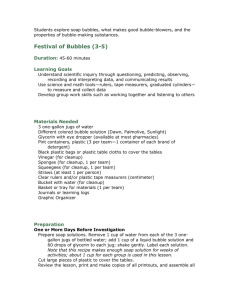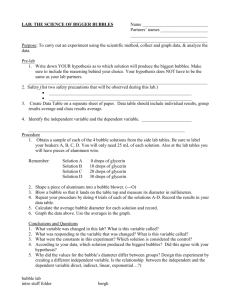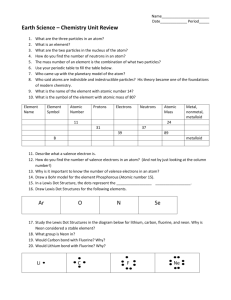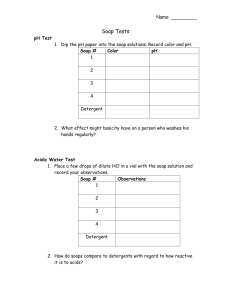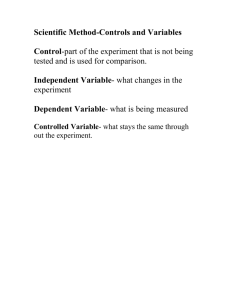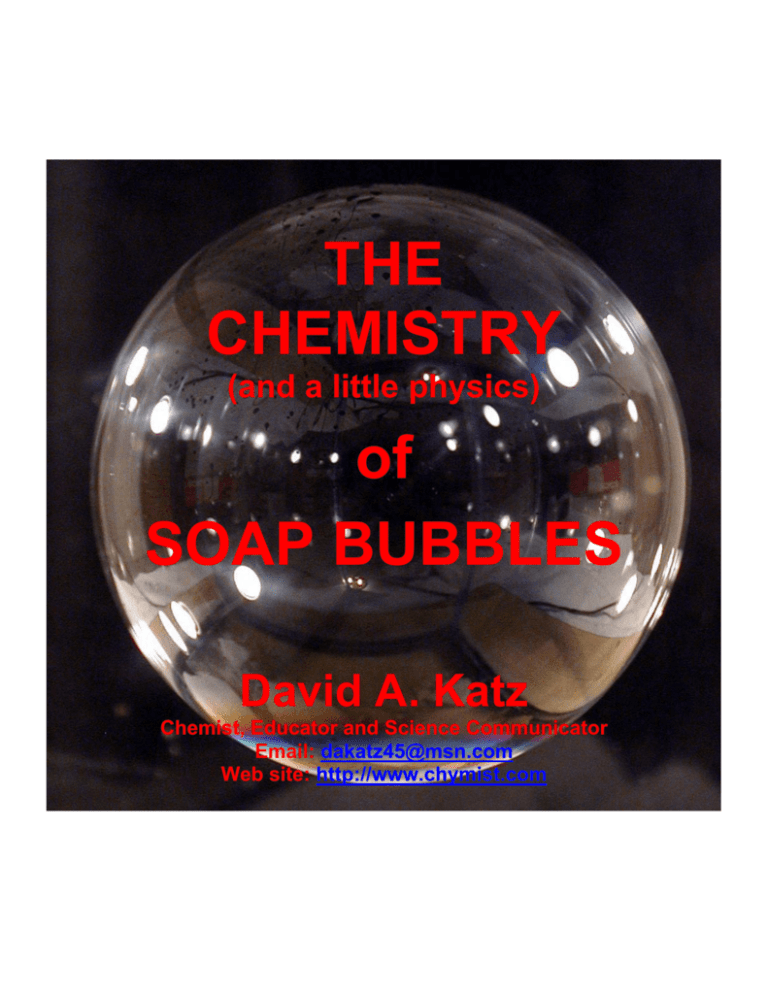
THE
CHEMISTRY
(and a little physics)
of
SOAP BUBBLES
David A. Katz
Chemist, Educator and Science Communicator
Email: dakatz45@msn.com
Web site: http://www.chymist.com
The Chemistry
(and a little physics)
of
Soap Bubbles
©2010, 2003, 2001, 1999, 1998, 1994, 1989, 1988, 1986, 1983, 1982 by David A. Katz
All rights reserved.
No reproduction permitted by any means, manual, electronic, or photographic,
without the express written permission of the author.
David A. Katz
Chemist, Educator, Science Communicator, and Consultant
133 N. Desert Stream Dr.
Tucson, AZ 85745-2207, USA
Voice/Fax/Message: 520-624-2207
Email: dakatz45@msn.com
All photographs by David A. Katz
No reproduction of photographs permitted by any means, manual, electronic, or photographic,
without the express written permission of the author.
2
Introduction
I have been playing with soap bubbles for most of my life. My studies turned from simple
amusement to semi-serious study in about 1978, when I started investigating the chemistry of
toys. By 1982, I could easily present 30 minutes of soap bubble demonstrations to a class or
group. In 1987, I was asked to present a talk on the science of soap bubbles and balloons at the
Franklin Institute of Philadelphia as part of their annual Bubbles and Balloons Festival. At those
festivals, I had the opportunity to meet and share information and techniques with Richard
Faverty, and Tom Noddy. At the suggestion from Tom Noddy, I did schedule a visit with Eiffel
Plasterer in June of 1989, at his farm in Huntington, Indiana, as a side trip while traveling out
west for one of my summer workshops. In his basement bubble laboratory, I found Mr. Plasterer
still exhibited the excitement of a child as he demonstrated his various solutions and bubbles to
me. After a wonderful day of bubbles and conversation, Mr. Plasterer complemented me, as I
was leaving, by saying that in all his years of experience, I was the first bubbleologist he met
who really understood the chemistry of soap bubbles.
After the Bubbles and Balloons Festivals, I would return to the laboratory and try new soap
bubble experiments. As I returned each year for the festival, I would bring new activities for my
presentations. In 1988, I was filmed for the 3-2-1 Contact television show for an episode titled
Structure: Bubble, Bubble which aired in October of that year. Unfortunately, 1989 was the last
year that the Franklin Institute ran their Bubbles and Balloons Festival.
I presented soap bubble programs and assisted in soap bubble festivals at many schools as
separate programs, as workshops in summer programs, in science museums, at public programs,
and also as a part of my Chemistry in the Toy Store programs. A number of those festivals
continued for many years. I even presented a program on the mathematic principles of soap
bubbles to a summer program of math teachers at Princeton University. That latter activity
inspired me to search out means of constructing a number of advanced geometric figures to see
the behavior of soap films in a number of non-traditional shaped bubble frames. Photographs of
some of these are included later in this book.
Why did I do this? It’s fun, it’s science, it’s a fascination with nature that I hope I never tire of.
I hope that the information I supply here will inspire many people, young and old, to explore the
science of soap bubbles and films. I include a photograph of my younger daughter Erica, quite a
few years ago, enjoying my soap bubble solutions.
3
4
SOAP BUBBLES
Materials and solutions
One of the most common items found in toy stores are soap bubbles. These are usually
accompanied by small plastic wands, a bubble pipe, or more complicated type of apparatus such
as bubble trumpets, bubble airplanes, bubble lawn mowers, and more, which appear in the
market each year. (See Figure 2) Most of the devices for making soap bubbles do not work well
or produce the results promised on package descriptions. The best results are usually obtained
with some form of bubble loops. Some companies have been producing large bubble loops with
many smaller loops inside or one large loop or concentric loops for making small bubbles in a
larger bubble. (See Figures 3 and 4) There was even a Swiss Army bubble blower with a set of
shapes for blowing bubbles. (See Figure 5) A large bubble loop can easily be made by
threading string through two plastic soda straws (see Figure 1) or by bending a wire coat hanger
into a loop. (Note: Plastic coated coat hangers will not rust as rapidly as regular metal coat
hangers.) Wrapping some string around the wire hanger will allow it to hold more soap solution,
making larger bubbles. (See Figure 7)
One interesting device is the Bubble Foamer, a plastic tube with holes in it, similar to a straight
flute, covered with cloth. (See Figure 6) When dipped in soap solution, the pores in the cloth act
as little bubble loops producing a foam of bubbles.
Figure 1. A bubble loop constructed from string and soda straws.
The bubble solutions commonly available in the toy store are dilute soap or detergent solutions
that are good for making small bubbles, but not particularly effective for producing strong soap
films or large bubbles. A better solution can be made at home.
There are many recipes for preparing soap solutions. A simple solution for making soap bubbles
or films can easily be prepared by mixing a soap such as Ivory®, Ivory® powdered detergent, or
a detergent such as Tide® in some distilled or deionized water. The most convenient substance
for making bubble solution is liquid dishwashing detergent. These detergents are usually
formulated to produce a heavy foam of long-lasting bubbles as consumers tend to think of heavy
foams as better cleaners.
5
Figure 2. Bubble devices: A bubble trumpet (left), bubble elephant (top center),
bubble horn (bottom center), and bubble banana (right)
Figure 3. Multiple bubble loops
Figure 4. A double bubble loop
6
Figure 6. A bubble foamer. The
cloth cover makes a continuous sheet
of foam.
Figure 5. A Swiss Army bubble blower
A general purpose bubble solution using liquid dishwashing detergent is:
3% liquid dishwashing detergent such as ultra Dawn® or Joy®, by volume.
95% water (distilled or deionized)
3% glycerin (available at drug stores)
The soap mixture should always be stirred, not shaken,
otherwise excessive amounts of suds are produced. Do
not use a low suds or "controlled suds" detergent and,
also, avoid detergents containing bleach and fabric
softeners.
Store the bubble solution in plastic
containers. (Note: The author uses 2 ½ gallon storage
containers such as those used for gasoline. Larger
containers can be quite heavy.)
Stronger bubbles are made by increasing the amount of
detergent and/or glycerin in small amounts. A solution
that is good for making stronger, longer lasting bubbles
consists of:
8% liquid dishwashing detergent such as
ultra Dawn® or ultra Joy®, by volume.
86% water (distilled or deionized)
6% glycerin (available at drug stores)
Figure 7. A large bubble loop made
from a coat hanger with string
wrapped around the wire
It appears that the formulations of dishwashing detergents may vary with different localities, so
the soap solution may have to be adjusted by adding additional detergent, up to about 10% by
volume. Generally, it was found, by the author, that when the dishwashing detergent
concentration exceeds 12% (by volume) the bubbles do not last as long.
7
The optimum concentration of glycerin was originally determined experimentally by the author
to be about 60%, by volume, of the liquid detergent concentration, when the soap bubble solution
consisted of 10% dishwashing detergent. This translates to about 75%, by volume, for the
“ultra” type detergents. A greater concentration of glycerin will not usually make longer lasting
bubbles. This is approximately the actual amount of detergent in the commercial dishwashing
liquid. Dishwashing liquids will contain additives including colors, fragrance, ethyl alcohol (as a
grease cutter), and glycerin (as a skin conditioner).
The glycerin is used to strengthen the soap film. Sugar can also be added but it is best to use it in
the form of a sugar syrup, made by heating equal volumes of sugar and water, since solid sugar
does not dissolve readily. White Karo syrup (corn syrup or dextrose syrup) also works well. If
you intend to store the soap solution for a long period of time, generally, it is best to use glycerin
as solutions containing sugar or Karo syrup may become moldy during long storage times.
A recipe for "super bubbles" (supplied by Fred Juergens, Dept. of Chemistry, University of
Wisconsin-Madison) calls for:
4 parts glycerin by volume
2 parts liquid Joy®
1 part white Karo® Syrup.
All parts are measured by volume. There is no water added to this solution. This produces a
thick solution that will be difficult to clean up. These “super bubbles” should only be used
outdoors.
Variables will depend on the purity of materials as well as the brand of soap or detergent used.
Distilled or deionized water is essential to prevent interference from dissolved metal ions,
although detergents will not be affected as much as a soap such as Ivory® (Metal ions in the
water are responsible for producing the soap "scum" that forms a ring around the tub.). If the
solution does not seem to work well, let it sit for a few days to a week. Aging improves the
characteristics of soap solutions. Super-bubbles may even bounce on a clean, smooth floor. A
note of caution, these bubbles break with a fair amount of force, keep them away from your face.
Also, the solutions will make the floor or ground slippery, wear rubber soled shoes or sneakers
and be careful to avoid falling. Indoors, a piece of indoor/outdoor carpet protects the floor and
can prevent slipping.
8
Experiment 1. Determining the Best Formula for a Soap Bubble Solution
Materials needed
Liquid dishwashing detergent
Distilled or deionized water (from grocery or drug store)
Soda straws
Containers to hold soap solutions
Glycerin (available from drug store)
Meter stick or tape measure
Timer, or stopwatch
Table with waterproof top or plastic tablecloth
Procedure
Start with liquid dishwashing detergent and distilled or deionized water. Make a series
of solutions such as 2% detergent by volume, 4%, 6%, 8%, and so on up to a maximum
value of no more than 20%.
Select one soap solution. Spread some of the
solution on a clean waterproof surface such as
a Formica tabletop or a table covered with a
plastic tablecloth to wet an area about 40 to
50 cm (about 15 to 20 inches) in diameter.
Dip a soda straw into the solution, touch it to
the wet surface, and gently blow a
hemispherical (or dome shaped) bubble. Do
this several times to get the largest bubble
possible. Use a meter stick or tape measure to
measure the size of the largest bubble. (When
the bubble breaks, it leaves a ring of suds that
is a record of the bubble’s diameter.) Record
the size of the bubble. Repeat this process
several times and determine the average size of
the bubbles you could blow from that
particular solution.
Repeat the bubble blowing procedure for each
soap solution you prepared.
You want to use the concentration of detergent
that consistently makes the largest bubbles.
Once you find the concentration of detergent that makes the largest bubble, make
several solutions adding glycerin in the concentrations of 2% by volume, 4%, 6%, and
so on up to a maximum value of no more than 12 to 15%.
9
Repeat the bubble blowing procedure that you used for the detergent solutions, but this
time, try to blow large bubbles approximately the same size each time. Use a watch
with a second hand, a stopwatch, or a timer, to determine how long the bubble lasts.
You want to determine the concentration of glycerin that produces the longest lasting
bubbles.
The best solution produces the largest and longest lasting bubbles.
The Chemistry of Soaps and Detergents
A soap or detergent molecule consists of a long slender nonpolar hydrocarbon chain (consisting
of hydrogen and carbon) with a highly polar oxygen-rich group attached to one end (see Figures
8 and 9). Water molecules, consisting of hydrogen and oxygen arranged in a bent or angular
arrangement (see Figure 10), are polar (think of a polar substance acting like a little magnet). In
a soap, the nonpolar hydrocarbon end is hydrophobic, which means it moves away or separates
from water like the salad oil in a vinegar and oil salad dressing. The polar oxygen-rich end is
hydrophillic, which means it is attracted to water and will try to dissolve in it. When soap
molecules are added to water, some form clusters, called micelles, in the body of the solution
where the nonpolar ends are in the middle of the cluster and the polar ends are on the outside.
(See Figure 11) These micelles are important to the cleaning properties of soaps and detergents.
Many of the soap molecules tend to migrate to the surface and orient themselves so that their
polar ends are pointed toward the water and the nonpolar ends are sticking out. The surface of
the water is covered with a nonpolar layer which drastically reduces the surface tension of the
water and adds stabilizing elastic properties to the liquid surface along with an increase in total
surface area. (The total surface area is increased as a result of the non-polar ends of the soap
molecules sticking out of the surface.) This is accompanied by an increase in the surface energy
(or surface tension) of the solution (but still less than the surface tension of pure water – see
Experiment 2). These surface molecules are important in making soap bubbles. When a plastic
or wire loop or frame is placed in the solution and then withdrawn, the water tends to drain from
the inside of the raised surface, making the surface begin to collapse on itself forming a
multilayered film that forms a soap bubble. (In essence, the ends of the soap molecules fall over
and become tangled like pieces of spaghetti to form the surface film. The layers consist of soap
molecules on the inner and outer surfaces with a water and/or water-glycerin layer in the middle.
See the soap bubble diagram in Figure 13.) The soap limits the minimum thickness of the soap
film to the length of two soap molecules stacked end to end. Moderately thick films, such as
these, are self-healing with respect to small punctures. That is, escaping air bubbles that burst
through the surface do not cause the film to break. Also, small objects may pierce a soap film
and be removed without it breaking, as long as the objects have a coating of water or soap
solution and are not totally dry.
10
Figure 8. Sodium stearate, a typical soap is designated by a space filling model, top,
and a condensed molecular formula, bottom.
nonpolar hydrocarbon group
ionic group
Figure 9. A shorthand notation for a soap molecule.
11
Experiment 2. Comparing the Surface Tension of Water vs. a Soap Solution
Materials needed
Two U.S. pennies or other small coins
Eyedropper
Water
Dishwashing detergent
Procedure
Obtain two clean coins, an eyedropper, some water and some dishwashing detergent.
Count the number of drops of water you can place on a coin. While you are adding drops
of water to the coin, observe how the water behaves.
Add one or two drops of dishwashing detergent to some water in a small paper or plastic
cup and stir gently to mix. Count the number or drops of the soap solution you can place
on a coin. While you are adding drops of the soap solution to the coin, observe how the
solution behaves.
How do the beads of liquids placed on the coins compare?
12
Soap films can come together at only two angles. If there are three films that meet along a
common edge, the angles between them are 120. If there are four films that meet at a point, the
angles between them are 109 (see Figure 12). If there are more soap films, then they will
rearrange themselves so that there are never more than three films in contact along an edge or
four films in contact at any one point. (See Experiment 3)
(a)
(b)
Figure 10. A water molecule showing (a) arrangement of the atoms
and (b) the shape of a water molecule
Figure 11. A micelle
Figure 12. Angles formed by soap films.
A soap bubble is round (or spherical) since the surface of the soap film which forms it will try to
contract to take up the smallest surface area. In nature, the volume with the smallest surface area
is a sphere. (See Experiment 4)
13
Experiment 3. Observing the Angles formed by Soap Films
Materials needed
Wire or plastic frames: a triangular prism and a tetrahedron
Soap bubble solution
Bucket or container to hold bubble solution and allow dipping of frames
Procedure
Obtain two wire or plastic frames, a triangular prism and a tetrahedron and a container of
soap bubble solution large enough to hold the frames. (Frames can be made from copper
wire by twisting or soldering them together at the angles or constructed from kits. See the
section on Bubble Materials at the end of this book.) Dip each frame into the soap
solution and withdraw it. Observe the angles between the soap films in the frames.
14
Experiment 4. Observing Surface Tension in a Soap Film or Understanding Why a Soap
Bubble is Spherical.
Materials needed
Bubble loop made from string and soda straws
Soap bubble solution
Container for soap bubble solution
Procedure
Obtain a bubble loop made from string and soda straws (See Figure 1). Hold it by one
straw so that the soda straws are positioned horizontal to the ground and the string forms
the left and right sides of the square or rectangle. Note the shape of the bubble loop.
Dip the loop into some soap solution and hold it up the same way as before. How does
the soap film in the loop affect its shape? What happens when you break the soap film?
Experiment 5. Observing Surface Tension in a Soap Bubble
Materials needed
Soap bubble wand
Soap bubble solution
Plastic or paper cup or other container to hold soap solution
Procedure
Obtain a small bubble wand with a loop on one end. Dip the wand into some soap
solution and blow a medium to large bubble. Catch the bubble on the loop of the wand.
Insert a dry finger into the loop to poke a hole in the soap film. What happens to the soap
bubble?
15

